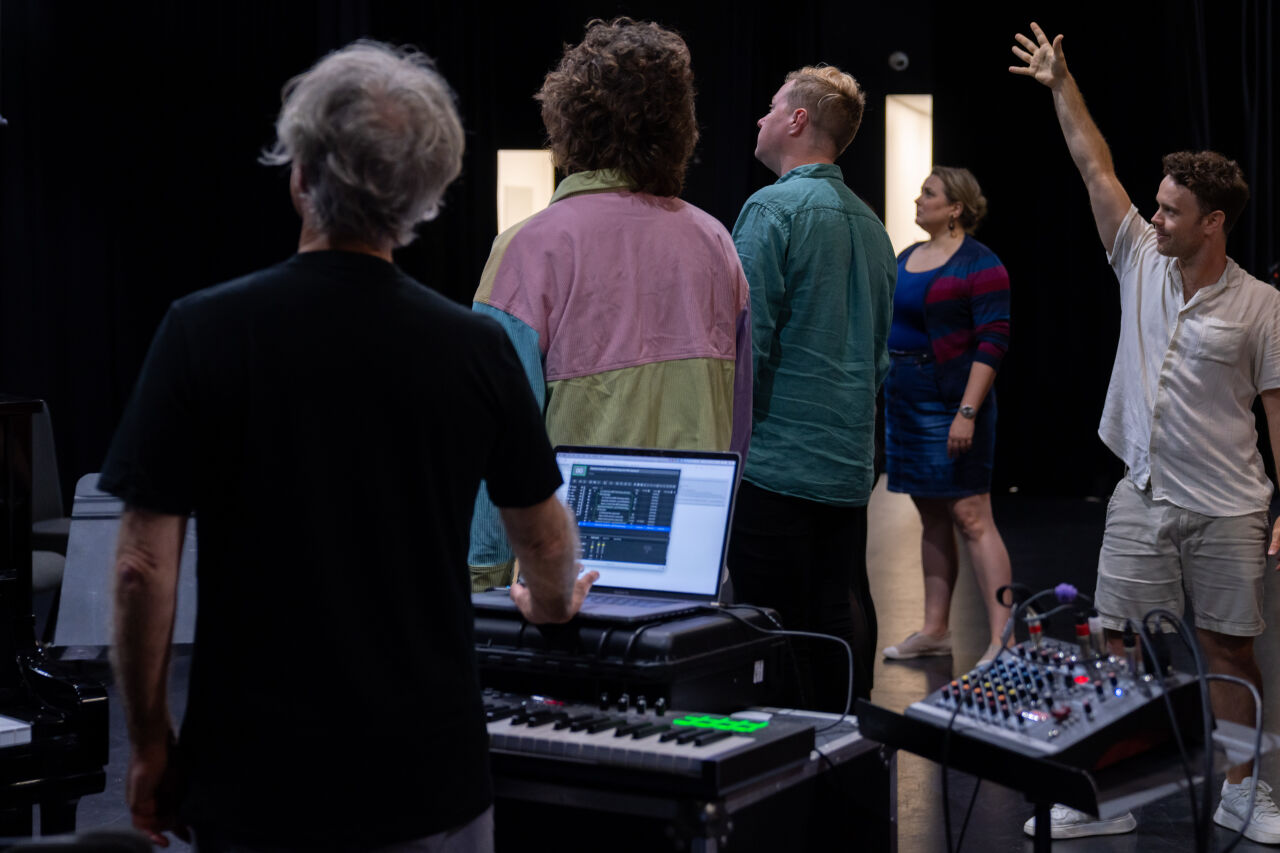Belloo undertook a development period culminating in an industry work-in-progress showing for a chamber opera adaptation of Matthew Condon’s classic novel, A Night at the Pink Poodle. We asked the artists how it went.
This project started with you, and you've been working on this project since 2019/2020. What made you want to take Matt Condon’s novel from page to stage?
Shaun Charles (Librettist): I’ve always been fond of the novel, which I read when it was first published in the 90s. It always struck me as having theatrical potential of some kind. All the Ancient Greek mythological references infusing a story about a real estate agent on the Gold Coast seemed (and still seems) an entirely unique combination. My background is in text-based drama, but a straight play adaptation didn’t feel like it could quite capture the scope of the work, or indeed the Gold Coast itself. Opera, at least my limited understanding of the form, seemed to offer the right palette. So, that’s how I tried to sell it to people. It took a while, folk couldn’t seem to reconcile the idea of an opera set on the Gold Coast, but finally HOTA saw the potential. What we have created is not a standard, classical opera by any means. There’s a scene set in a Cavill Avenue night club, classical opera was never going to cut it there. We now call it ‘pop-opera’ when talking about it.
What can you tell us about the music within the work?
Peter Farnan (Musical Director): The big challenge for me was writing sung music when there was no patterned rhythm, rhyme and strophic structure to the language, as there would be in a ’song’ … or rather the structuring was driven by textual and thematic imperatives. So while the language made sense, the delicious puzzle was to write passages that made musical sense. Some of the tools of balance, symmetry, creating and then satisfying the expectations of the ear, were not available. Where you might expect a melody to continue, harmony to resolve or a section to build to a climax (or not) there was no language (or too much) there to use. Sometimes it had all been said perfectly but I was in the middle of a musical story and had run out of words. Sometimes the words just kept going when I had arrived at closure. Shaun allowed me to take great liberties. Sometimes when I repeated or (gulp) cut text, it ended up making musical and dramaturgical sense. This process revealed even more to us about character and story. We discovered together that simple words, sometimes buried in a sentence, could rise up and gather extra poetic resonance because the music underlined them. Sometimes Shaun would tell me ‘these words are the important ones - highlight those.’ Shaun and I would hash out solutions together … and the music would suggest new imperatives that resulted in re-writes, of text then music. And at all times character and narrative led us. The process is ongoing.
Can you tell us a bit about how you work when you’re directing a development stage of a new work, as opposed to directing rehearsals straight into a presentation season?
Caroline Dunphy (Director): Development work is such an important time artistically and collaboratively. For me, first and foremost it’s a time to encourage openness and play as truthful artists coming together, working towards a common goal. Even though there may still be pressure to produce sections of the work in a very short timeframe, I feel it’s my job to assist in the management and balance of produced content work and raw playfulness inside this. This in turn hopefully engages those who are participating off the stage as well as spectators observing as those early discoveries invigorate and stimulate everyone involved. It never ceases to amaze me what we can discover together as a band of artists working collectively, even without a polished performance outcome.
What appealed to you and the Belloo team about taking this work on, and what are its next steps?
Katherine Lyall-Watson (Dramaturg): We loved Shaun’s bold and hilarious take on the book and when we heard Peter Farnan’s compositions we were sold. How could you go past a pop-opera with cane toads singing “I want to be free” while dodgy real estate deals are struck and love blossoms in a penthouse?! A Night at the Pink Poodle has everything and the music is so filled with ear-worms, you’ll find yourself humming and singing it for weeks. What’s next? Well, Shaun and Peter are finalising the script and the musical score, ready for rehearsals. Our dream is to bring the work to life at HOTA before it hits the road and tours the country. If there are any canny property investors or philanthropists out there who’d like to be part of a magnificent Gold Coast pop fantasia, we’d love to hear from you on admin@belloocreative.com.
Subscribe now for Art in your inbox
News, special offers, events, competitions, and arts & culture updates on the Gold Coast. All the good stuff.














